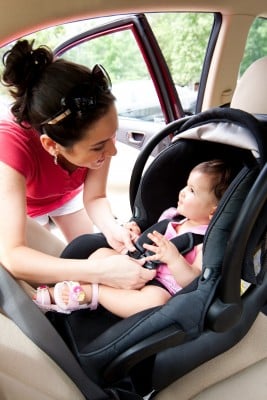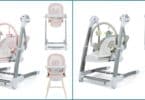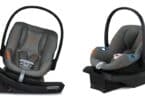Since having my son 5 years ago I have seen some pretty crazy car seat installs. One time I even passed a car on the highway that had a convertible seat installed in the front seat forward facing. After seeing this I wasn’t surprised when I came across a study today that found one-third of Canadian children are strapped into their car seats incorrectly.
According to the 2010 Survey on Child Restraint Use released by Transport Canada 95.8 percent of child passengers travel in car seats, but the car seats are used correctly just 64 percent of the time.
“It’s all very well to use a car seat but if you’re not using it correctly it won’t protect the child as it should,” said Kristen Gane, a spokeswoman for Safe Kids Canada.
The problem is that parents sometimes do not know how to choose the correct car seat for their child or how to install it properly, Gane said.
The survey found that parents in the Yukon have the highest level of correct usage of car seats (more than 90 percent). In contrast, Saskatchewan had the lowest level at 53 percent. Parents in the Yukon performed best overall when it came to the use of child restraints overall as almost 100 percent of children were using either car seats or seat belts in a vehicle.
“We’re making progress,” said Anne Snowdon, a health researcher at the University of Windsor, who led the survey.
More than 7,000 cars and 9,700 child passengers were surveyed at 174 traffic intersections across Canada (excluding Nunavut). While Snowdon and her team found the vast majority of infants and toddlers were in car seats, and 92 percent of children aged nine to 14 used seat belts, they were surprised to see that less than half of children aged four to eight were in booster seats.
Gane believes that parents assume that the booster is optional because it doesn’t look like it does very much. What they don’t know is that when your child is in a booster seat the seat belt sits at the right height on a child’s body, protecting them from seatbelt-related injuries in a crash.
Both Snowdon and Gane said promoting booster seats should become a priority. Some provinces do not enforce the use of booster seats.
A positive find during the study was that premature transitions from one type of car seat to the next have declined compared to 2006 findings.
Gane says parents shouldn’t be too eager to “graduate” their children to the next level of the seat, since each subsequent type of seat offers less protection to a child.
The good news is that manufacturers are making seats that last from birth to 6 or 7. Additionally, many of the new seats are universally installable using the LATCH system, which became mandatory in all vehicles in 2002.
Related Articles:
- Feature Review: Britax SGL Belt-Positioning Booster
- Cybex Launches ATON Infant Car Seat In The U.S.
- Britax To Introduce New Frontier 85 SICT (Side Impact Cushion Technology)
- Study Reveals That Young Children Can Undo Carseat Restraints







